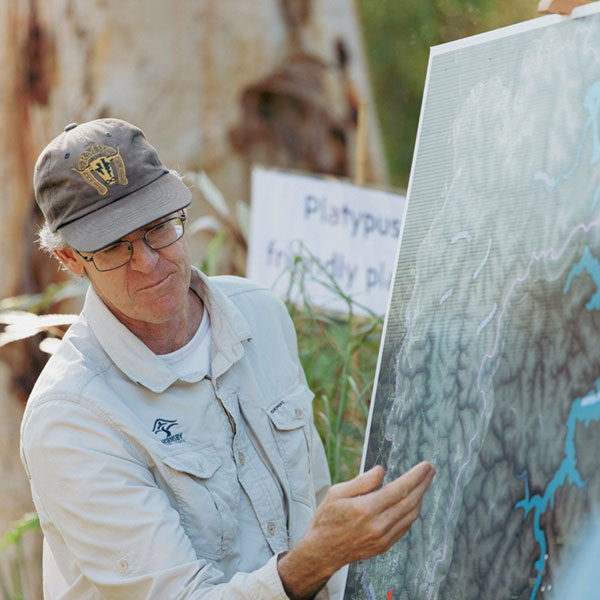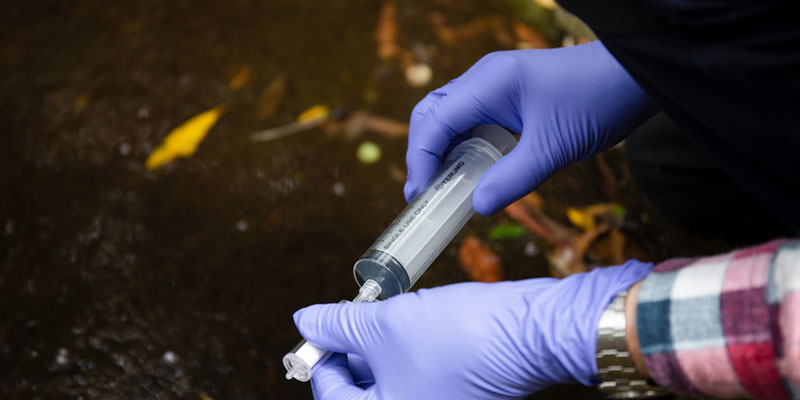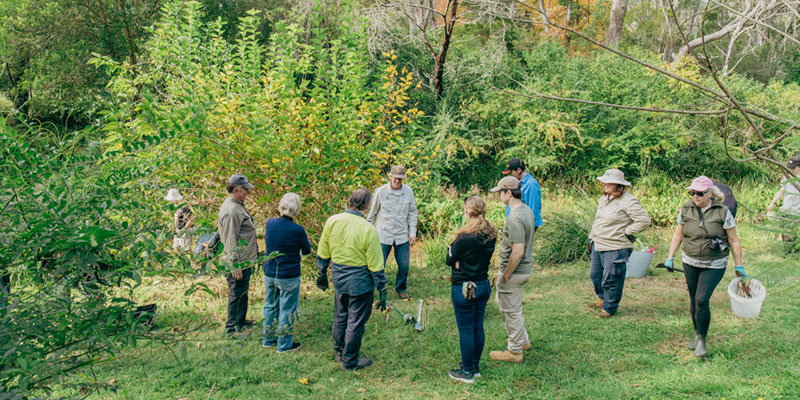
From counting penguins, to spotting whales and plotting platypus, the phenomenon of citizen science has swept the world in recent years.
From counting penguins, to spotting whales and plotting platypus, the phenomenon of citizen science has swept the world in recent years.
Citizen science is a collaborative effort where members of the public actively engage in scientific research, typically alongside professional scientists and field experts, to increase scientific knowledge.
Citizen scientists might take and upload photos or sound recordings of wildlife to help track species distribution, monitor water quality in local creeks to assess environmental health, or observe and count migrating whales to aid in conservation efforts.
Here in the Bushland Shire, there’s plenty of ways to get involved in citizen science. From sampling eDNA to counting birds in your backyard or simply logging your observations along your regular Sunday bushwalk, you can make a contribution to science that might just help to form new understanding about the world we live in.

Why is citizen science important?
Citizen science projects can significantly expand the reach of scientific research. With the help of volunteers, scientists can collect data over large geographic areas and long periods, which would be challenging to achieve alone.
Over the years, citizen science projects have helped us understand more about the migration patterns of birds, discover new species, learn about light pollution, track invasive species, improve conservation and develop community health initiatives.
By involving the public in scientific research, citizen science also fosters a greater sense of community and environmental stewardship and it provide educational opportunities for participants. People of all ages can learn about scientific methods, data collection, and the specific topics being studied.
Data collected through citizen science can inform policy decisions and conservation efforts. Local governments and organisations can use this information to develop more effective strategies for managing natural resources and protecting the environment.
Citizen science worldwide
Though citizen science is a relatively new term, people all over the world have been participating and contributing to scientific research for years. One of the oldest examples of citizen science in North America is the annual Christmas Bird Count, sponsored by the ³Ô¹ÏÍøÕ¾ Audubon Society since 1900.
More recently, two of the world’s largest and most popular platforms for people-powered research have become increasingly popular: Zooniverse and iNaturalist. Almost 3 million iNaturalist users have now contributed at least one citizen scientist observation!

Citizen science in Hornsby Shire
The Bushland Shire offers a unique environment for citizen science due to its numerous national parks, nature reserves and diverse landscapes which include bushland, waterways, and urban and rural areas.
Residents can participate in several different projects and citizen science platforms that monitor local wildlife, plant species, water quality, and more.
Here’s just a few of the ways that you can get involved:
Observe wild living things with the iNaturalist app
Due to its very high level of use and wide application, iNaturalist is Council’s app of choice for smartphone observations of nature in Hornsby Shire. Unlike many other apps, it doesn’t just focus on one group of animals, plants or other organisms. Any living thing can be observed, by way of a photo or sound recording, and posted on the app.
Learn more about .
Join a “bioblitz”
If you are keen on becoming an iNaturalist citizen scientist, taking part in an iNaturalist bioblitz is a great way to start. A bioblitz is an event where many people get out and about to find and identify as many species as possible, in a specific area and over a set period of time. The primary goal of a bioblitz is to get an overall count or ‘biological census’ of the different plants, animals, fungi, and other wild living things in a place.
Recent bioblitzes, in which Hornsby Shire participated, were the and the .
Get involved with Streamwatch
The Streamwatch program is an initiative from Greater Sydney Landcare that monitors the health of local waterways. By collecting data on water quality and observing changes over time, participants can help protect these vital ecosystems. .
Attend local educational workshops
Hornsby Shire Council and local organisations frequently host workshops and training sessions on various citizen science topics. These events provide valuable knowledge and skills for effective participation in scientific projects.
A recent program we facilitated employed cutting-edge eDNA technology to detect wildlife in local creeklines. Volunteers were trained to collect eDNA water samples and made observations, enhancing our understanding of the environment by providing crucial data on biodiversity. This data contributed to a baseline biodiversity assessment of Hornsby Shire creek catchments.
By participating in citizen science in Hornsby Shire, you can contribute to valuable scientific research, help protect your local environment, gain a deeper understanding of the natural world and have a lot of fun.

Learn more about at our website.








